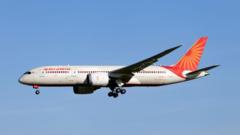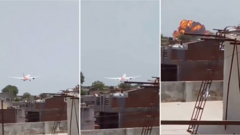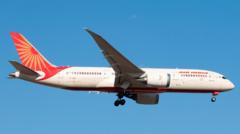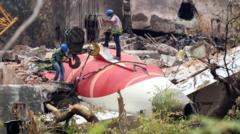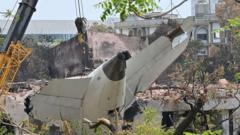In the aftermath of Air India Flight 171's crash shortly after take-off in Ahmedabad, investigators are meticulously examining wreckage and flight data to uncover the causes behind this rare aviation disaster, with discussions around pilot error, mechanical failures, and systemic issues taking center stage.
Investigating the Air India Plane Crash: What We Know So Far
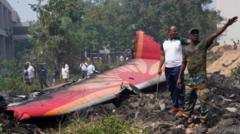
Investigating the Air India Plane Crash: What We Know So Far
As investigations continue into the Air India Flight 171 crash, multiple angles of analysis examine potential causes and the technology behind crash investigations.
Air India Flight 171 tragically went down only 30 seconds post-takeoff from Ahmedabad, plunging into a crowded residential area and heightening public concern over aviation safety standards. The incident, involving a Boeing 787 Dreamliner, saw the loss of cockpit communication just prior to impact, leaving investigators with pressing questions about the crash's cause. The Indian Aircraft Accident Investigation Bureau (AAIB) is tasked with a complex inquiry that should yield preliminary findings within a month and a comprehensive report within a year, following International Civil Aviation Organization (ICAO) protocols.
The aircraft, bound for London Gatwick, was piloted by Captain Sumeet Sabharwal and co-pilot Clive Kundar, carrying 242 passengers and carrying a significant fuel load. Initial considerations for the crash include the potential failure of both engines due to factors such as bird strikes, fuel contamination, maintenance mistakes, or crew error that may have led to an inadvertent fuel cutoff. Such an event, described as “the rarest of the rare” by aviation experts, poses a unique challenge for crash investigators.
Experts emphasize the importance of examining the aircraft's engines, as post-impact engine condition can reveal crucial information about their performance at the time of the crash. Findings from the flight data and cockpit voice recorders—colloquially known as black boxes—are expected to provide insights into the cockpit operations and aircraft's performance during the flight. These devices collect extensive data, including engine outputs and pilot communications, which will direct the investigation's focus.
The role of Boeing's Enhanced Airborne Flight Recorders is critical, as they can confirm whether the engines were functioning at the time of the accident. If the investigation identifies operational issues pertaining to the aircraft's flight management system, this would raise alarm across the aviation community regarding similar aircraft currently in service worldwide.
As the investigation proceeds, Aviation authorities in India have yet to attribute blame to any individuals or systemic failures following recent inspections of the Air India Boeing 787 fleet, which did not yield immediate safety concerns. Moreover, collaboration between the AAIB and international aviation experts from organizations like the National Transportation Safety Board (NTSB) and Boeing itself will enhance the fact-finding mission.
Analysts express optimism that technology advancements in flight data management will facilitate swift identification of contributing factors to the crash. Through rigorous evaluation of wreckage and extensive flight logs, investigators will piece together key components that could explain the abrupt descent of Flight 171. Despite the challenges, experts affirm that various elements of the aircraft, ranging from maintenance history to flight training of the crew, will be scrutinized to reach a comprehensive understanding of what transpired.

